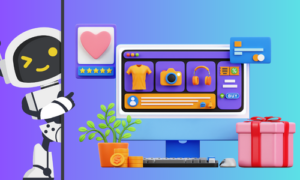How to implement AI in your job
Incorporating artificial intelligence (AI) into your job can be a game-changer, opening doors to improved productivity and smarter decision-making. Here’s a brief guide on how to implement AI effectively:
1. Identify Needs: Pinpoint areas in your job where AI can make a difference, like automating tasks or analyzing data.
2. Gather Data: Start by collecting and organizing relevant data. High-quality data is the foundation of successful AI implementation.
3. Choose Tools: Select AI tools or platforms that match your needs. These can range from pre-trained models to custom solutions.
4. Learn the Basics: Basic AI knowledge goes a long way. Understanding the fundamentals will help you make informed decisions.
5. Collaborate: Team up with AI experts if needed, as AI is often a collaborative effort.
6. Pilot Projects: Test AI applications through small-scale pilot projects before going big.
7. Integration: Incorporate AI into your daily workflow, automating tasks and enhancing decision-making.
8. Monitor and Adapt: Keep a close eye on AI performance and be ready to adapt as needed.
9. Stay Informed: Stay up-to-date with AI trends and best practices to stay competitive.
10. Scale Up: Once you’ve seen success, consider scaling AI across your organization.
How humans can take advantage of AI and implement it in their jobs
Despite the potential horrors of AI, it is also a very powerful tool that can be used to do a lot of good. Here are a few ways that humans can take advantage of AI and implement it in their jobs:
- AI can be used to automate tasks. This can free up human workers to focus on more creative and strategic work.
- AI can be used to improve decision-making. AI can analyze large amounts of data to identify patterns and trends that would be difficult or impossible for humans to see.
- AI can be used to create new products and services. AI can be used to develop new products and services that are more efficient, effective, and user-friendly.
- AI can be used to solve complex problems. AI can be used to solve complex problems in areas such as healthcare, climate change, and education.
Here are a few specific examples of how you can implement AI in your job:
- If you are a sales representative, you can use AI to automate tasks such as lead generation, qualification, and follow-up. For example, you can use AI to generate a list of potential leads based on your ideal customer profile, and then use AI to qualify those leads by scoring them based on their interest in your product or service.
- If you are a customer service representative, you can use AI to automate tasks such as answering customer questions, routing tickets to the right departments, and resolving issues. For example, you can use AI to answer common customer questions using a chatbot, and then use AI to route more complex issues to the appropriate departments.
- If you are a marketing manager, you can use AI to automate tasks such as creating and managing social media campaigns, personalizing marketing messages, and tracking the results of marketing campaigns. For example, you can use AI to create social media posts that are tailored to specific audiences, and then use AI to track the performance of those posts.
- If you are a software developer, you can use AI to automate tasks such as code review, testing, and deployment. For example, you can use AI to review your code for potential errors and security vulnerabilities, and then use AI to deploy your code to production servers.
- If you are a writer, you can use AI to automate tasks such as research, brainstorming, and editing. For example, you can use AI to generate ideas for blog posts or articles, and then use AI to edit your work for grammar and style errors.
These are just a few examples. There are many other ways to implement AI in your job. The key is to identify tasks that can be automated and then find the right AI tools for the job.
Conclusion
AI is a powerful tool that can be used to improve your productivity, efficiency, and effectiveness in your job. By following the steps above, you can start to implement AI in your job today.
Here are a few additional tips for implementing AI in your job:
- Start small. Don’t try to automate everything at once. Start by automating a few tasks that will have the biggest impact on your productivity.
- Get buy-in from your team. If you are working with a team, it is important to get their buy-in before implementing AI. Explain how AI can benefit them and how it will make their jobs easier.
- Be patient. It takes time to implement AI and to see the results. Be patient and don’t get discouraged if you don’t see results immediately.
With a little planning and effort, you can implement AI in your job and start to see the benefits.




